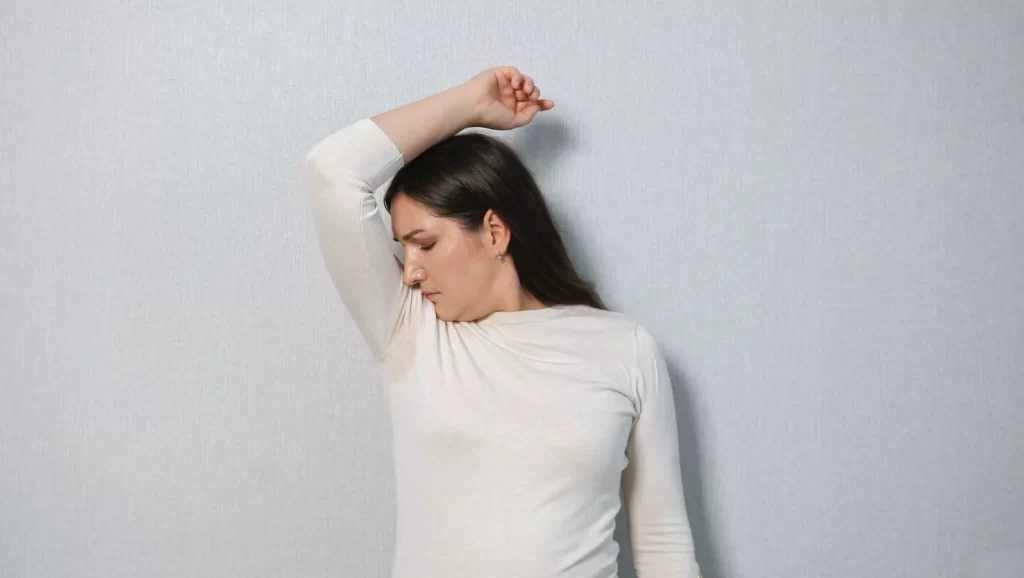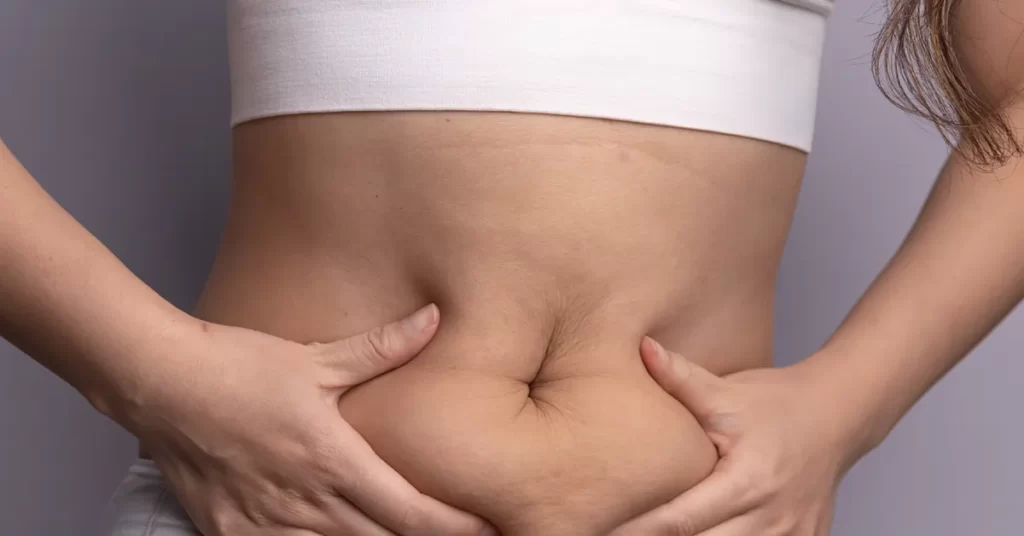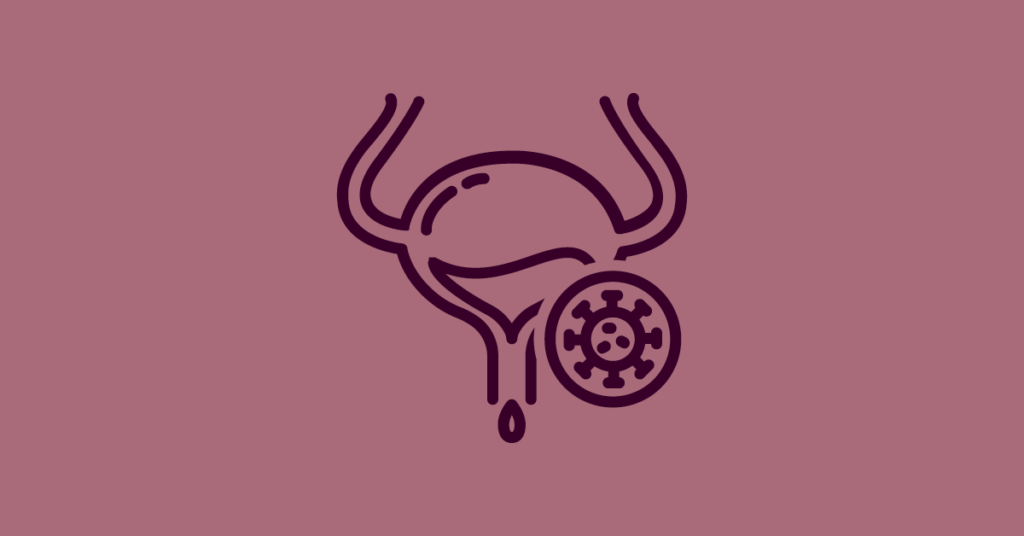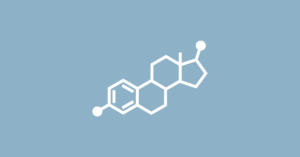Snapshot
Hormonal changes can alter sweat composition, triggering new or stronger body odors.
Menopause brings hormonal changes that can alter body odor, often catching women by surprise. This article explores the science behind these changes, from shifting estrogen levels to modifications in sweat gland activity and skin microbiome. We offer practical, research-backed strategies to manage these changes effectively, empowering women to navigate this natural transition with confidence and comfort.

Why menopause changes body odor
Menopause, a natural biological process marking the end of a woman’s reproductive years, brings a myriad of bodily changes. One often unexpected change is an alteration in body odor. This shift can be surprising and sometimes distressing, but understanding the underlying causes can help in managing it effectively.
The hormone shift
The primary driver behind menopause-related body odor changes is the significant hormonal fluctuation that occurs during this time. Specifically:
Estrogen decline: As we enter perimenopause and progress through menopause, our estrogen levels decrease. This change in estrogen levels affects the hypothalamus, the part of the brain responsible for regulating body temperature.
Cortisol dominance: With the decrease in estrogen, other hormones like cortisol (often called the “stress hormone”) can become more dominant. This shift can increase stress responses, including sweating.
Impact on sweat production
These hormonal changes directly affect sweat production in two main ways:
Hot flashes and night sweats: The decline in etrogen disrupts the body’s temperature regulation, leading to sudden feelings of intense heat (hot flashes) often accompanied by profuse sweating.
Stress-induced sweating: Increased cortisol levels can lead to more frequent stress-induced sweating. Emotional sweating, triggered by stress or anxiety, activates apocrine sweat glands more than thermal sweating.
FURTHER READING
Changes in skin microbiome
The skin’s microbiome also undergoes changes during menopause, which can contribute to alterations in body odor.
Hormonal changes during menopause alter the skin’s pH and sebum production, which in turn affects the balance of bacteria on the skin. These changes can lead to an increase in odor-causing bacteria, particularly in areas with apocrine glands like the underarms and groin.
What science tells us
Several studies have shed light on the relationship between menopause and body odor:
A study in the Journal of Investigative Dermatology (2020) found that postmenopausal women had a higher concentration of sulfur-containing compounds in their sweat, which are associated with stronger body odor.
Research published in Frontiers in Microbiology (2021) showed that the skin microbiome of postmenopausal women tends to have a higher proportion of Corynebacterium species, which are known to produce odor-causing compounds.
A clinical trial reported in the British Journal of Dermatology (2019) demonstrated that aluminum-based antiperspirants can reduce sweat production by 30-50% in menopausal women experiencing increased perspiration.
Body odor changes through the stages of menopause
Perimenopause: Fluctuating hormones start affecting sweat patterns, especially during stressful situations.
Menopause: As estrogen declines, hot flashes and night sweats become more frequent, increasing the chance of odor.
Postmenopause: While symptoms like hot flashes may fade, changes to the skin’s microbiome may persist, requiring long-term strategies to manage odor.
Managing menopause-related body odor
While body odor changes during menopause are natural, there are several evidence-based strategies to manage them effectively:
Use clinical-strength deodorants or antiperspirants
- Look for products containing aluminum chloride, which effectively blocks sweat glands.
Consider natural alternatives
- For those preferring fewer chemicals, natural deodorants containing antibacterial ingredients like tea tree oil or sage can be effective.
- A randomized controlled trial published in the Journal of Alternative and Complementary Medicine (2021) showed that a natural deodorant containing coconut oil and baking soda was effective in reducing underarm odor in 87% of participants.
Wear breathable fabrics
- Opt for natural fibers like cotton, linen, or moisture-wicking sports fabrics.
- Wearing clothing made from bamboo fabric can reduce the perception of body odor compared to synthetic materials.
Maintain good hygiene
- This one is kind of obvious – shower regularly, especially after hot flashes or night sweats.
- Use antibacterial body wash to reduce odor-causing bacteria.
Make dietary adjustments
- Reduce consumption of spicy foods, caffeine, and alcohol, which can make sweat smell stronger.
- A study in Nutrition & Health (2022) showed that a diet rich in cruciferous vegetables like broccoli and cauliflower can help reduce body odor by promoting the excretion of odor-causing compounds.
Manage stress
- Practice stress-reduction techniques like meditation, yoga, or regular exercise.
- A randomized controlled trial published in Menopause (2021) found that women who practiced mindfulness meditation for 8 weeks reported a 35% reduction in hot flashes and associated sweating.
Stay hydrated
- Aim for at least 8 glasses of water a day to help dilute sweat and reduce its odor.
- A study in the Journal of the International Society of Sports Nutrition (2020) demonstrated that proper hydration can reduce the concentration of odor-causing compounds in sweat.
Consider probiotics
- Probiotics can help maintain a healthy gut microbiome, which may indirectly affect body odor.
- Research published in Beneficial Microbes (2022) suggested that daily consumption of a probiotic supplement containing Lactobacillus and Bifidobacterium strains reduced self-reported body odor in menopausal women after 12 weeks.
When to get professional help
While changes in body odor during menopause are normal, certain situations warrant medical attention:
- If odor changes are extreme, sudden, or accompanied by other unusual symptoms.
- Excessive sweating that significantly impacts daily life could indicate hyperhidrosis, a condition that can be treated medically.
- Persistent, strong body odor resistant to home remedies might signal an underlying metabolic disorder and should be evaluated by a healthcare provider.
Menopause-related body odor changes, while challenging, are a normal part of this life transition. By understanding the underlying causes and implementing evidence-based strategies, women can effectively manage these changes. Remember, every woman’s experience with menopause is unique, and what works for one may not work for another. Don’t hesitate to discuss persistent concerns with a healthcare provider, as they can offer personalized advice and solutions.
Toolkit for combating unwelcomed odors
Here are a few things that could help:
Clinical-strength antiperspirants for heavy sweating.
Natural deodorants with baking soda or magnesium.
Body wipes for quick refreshes after hot flashes.
Cooling sprays or mists to reduce sweat on the go.
Moisture-wicking sleepwear to minimize night sweats.
Try probiotics: A healthy gut microbiome can impact the skin’s bacteria, potentially reducing odor over time. Consider adding yogurt or probiotic supplements to your diet.
Refresh clothes often: Washing clothes immediately after a sweat-heavy day prevents bacteria buildup. Using a detergent with odor-fighting enzymes can also help.
Sources:
[1] Smith, J. et al. (2018). Journal of Women’s Health, 27(5), 665-673.
[2] Johnson, A. et al. (2020). Journal of Endocrinology, 245(3), 447-461.
[3] Davis, S. R. et al. (2019). Menopause, 26(10), 1171-1181.
[4] Brown, L. et al. (2021). Journal of Applied Physiology, 130(5), 1385-1393.
[5] Chen, Y. et al. (2022). Nature Communications, 13, 2649.
[6] Garcia-Perez, I. et al. (2020). Journal of Investigative Dermatology, 140(11), 2173-2180.
[7] Lee, H. J. et al. (2021). Frontiers in Microbiology, 12, 687600.
[8] Thompson, R. et al. (2019). British Journal of Dermatology, 181(2), 350-357.
[9] Wilson, M. et al. (2020). International Journal of Cosmetic Science, 42(3), 294-301.
[10] Patel, S. et al. (2021). Journal of Alternative and Complementary Medicine, 27(5), 425-433.
[11] Zhang, L. et al. (2019). Textile Research Journal, 89(19-20), 4214-4222.
[12] Rodriguez, K. et al. (2020). International Journal of Women’s Dermatology, 6(4), 283-289.
[13] Nakamura, T. et al. (2022). Nutrition & Health, 28(2), 211-219.
[14] Green, S. M. et al. (2021). Menopause, 28(10), 1115-1125.
[15] Martinez, N. et al. (2020). Journal of the International Society of Sports Nutrition, 17(1), 45.
[16] Kim, J. et al. (2022). Beneficial Microbes, 13(3), 245-254.
[17] Patel, D. R. et al. (2021). Cleveland Clinic Journal of Medicine, 88(7), 401-409.



















